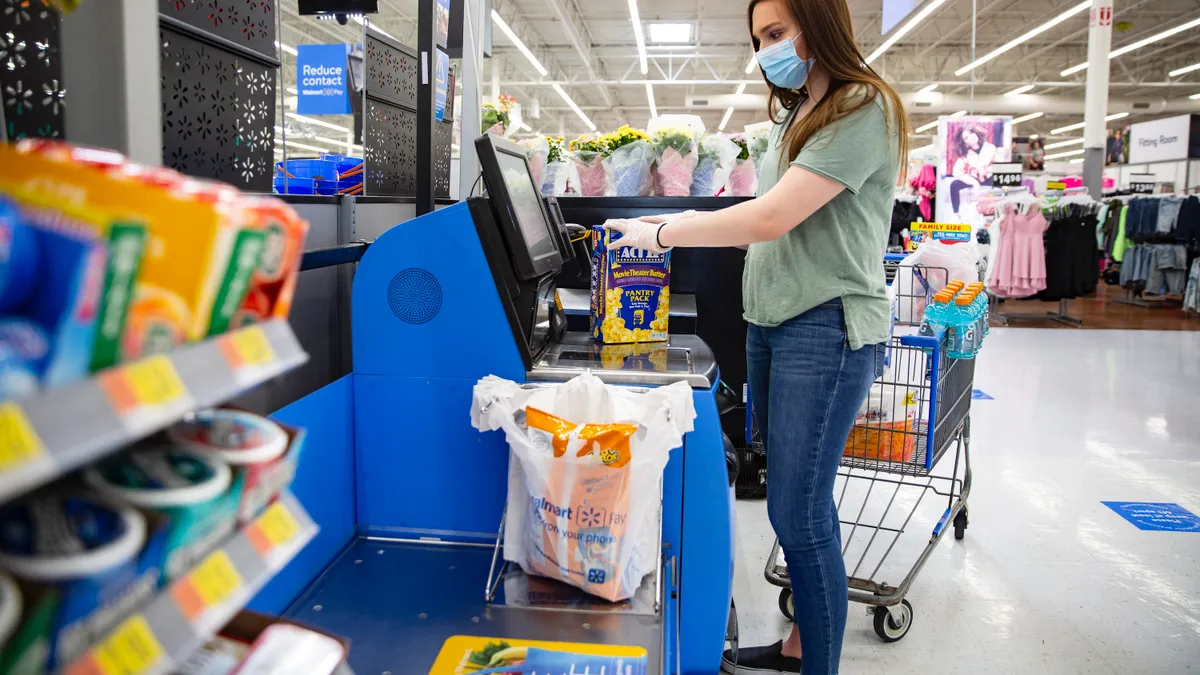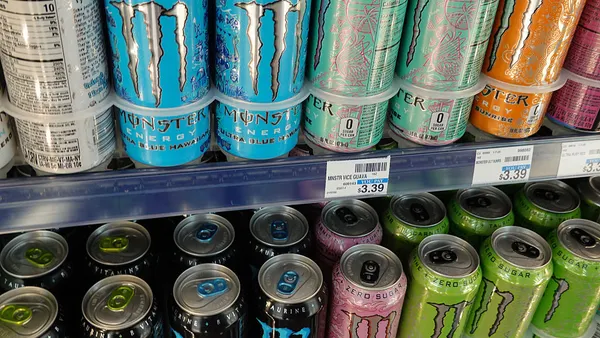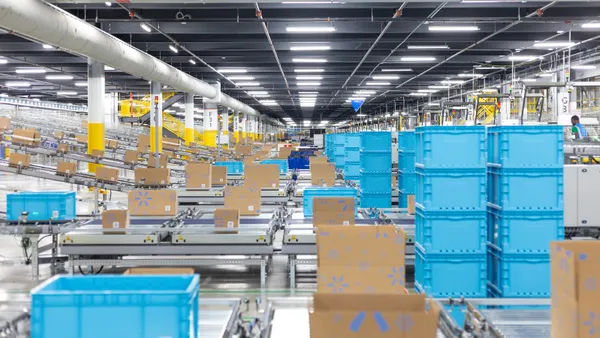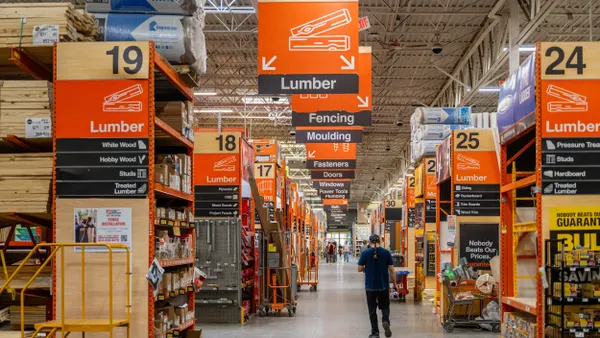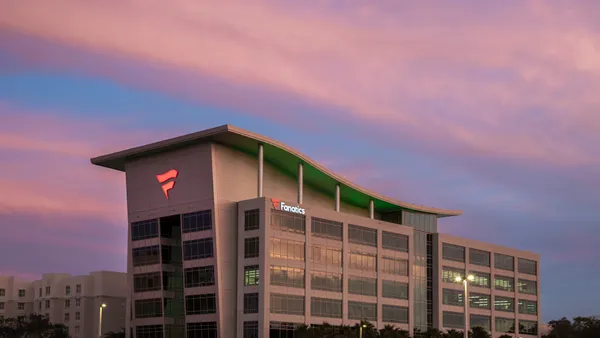Dive Brief:
- Walmart is shipping e-commerce orders from 2,500 stores after temporarily expanding the existing program to keep up with a boom in e-commerce order volume brought on by the pandemic, executives said on a first-quarter earnings call Tuesday. E-commerce sales grew 74% year over year in Q1.
- Incremental operating costs related to the pandemic totaled nearly $900 million in the first quarter — roughly three-quarters of which CEO Doug McMillon attributed to employee compensation and benefits. Much of the Q1 expense, including additional cleaning and some price inflation, will continue in the second quarter the CEO predicted. Walmart withdrew it's 2020 guidance Tuesday.
- Years of omnichannel investment prepared Walmart for the increased demand for e-commerce seen during the pandemic, executives said. The company accelerated omnichannel investments in Q1, but may need more fulfillment center capacity to keep up with online order volume. "Our need for capacity has been one that we've been aware of and ... we have a multi-year plan to grow it," McMillon said.
Dive Insight:
Shipping from stores has been part of Walmart's long-term plan as it heads toward a more holistic omnichannel strategy, but it hasn't bought into the concept as thoroughly as Target, which has been extolling the virtues of the model for several quarters (and reports Q1 earnings Wednesday). Marc Lore, Walmart's CEO of e-commerce U.S. called the company's thinking on omnichannel concepts "fluid" at an investor meeting in February. Less-essential retailers, such as DSW and Levi's have also seen the benefit of ship-from-store with so many states still restricting retail.
Tuesday, McMillion highlighted growing omnichannel flexibility as the skill that will allow the retailer to roll with changing retail and consumer restrictions state to state as 2020 progresses and beyond.
"In the end, we're going to end up with an omnichannel business, and it's going to serve customers in the way they want to be served. We're going to figure out ... what combination of choices we need to make from a supply chain point of view ... where to route orders through, how much to pay people ... You know we've got a lot to work with to sort it out," McMillon said.
Walmart has hired more than 235,000 new workers to handle shifting demand in the time of the coronavirus. A fulfillment center in Forth Worth, Texas McMillon visited recently has 4,000 workers — four times the count it had last peak season, he said on the call.
"One of the pieces of innovation that might go unnoticed here is that our team figured out how to hire people in a much shorter period of time. What would have taken us days and weeks was taking us hours and days. And that was also true for e-commerce fulfillment centers. So the stores stepped in to help with excess capacity," said McMillon.
The topline sales in Walmart's first quarter (up 10% year over year) were more consistent with expectations than McMillon would have guessed, he said on the call. But the costs to operate during the pandemic have been, and continue to be difficult to predict. Walmart's $900 million global incremental cost related to COVID-19 came in above Amazon's reported $600 million in similar spending (Walmart with just shy of double Amazon's retail sales).
But even as Walmart continues to expand its omnichannel offerings and capacity, McMillion said his number one priority, regardless of channel, is to stay in stock. High demand general merchandise items like electronics are not expected to be back in stock until June or July. Walmart's total inventory was down 8% year over year in Q1 and the drop was not evenly spread around the story, said McMillon.
"We expect the environment to stay quite volatile in the coming weeks and months," he said regarding in-stock status of high-demand items.



